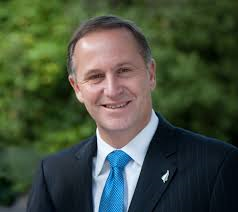


Posted January 28, 2016
The content of John Key’s State of the Nation speech highlights an important point when it comes to presentations attended by the media.
 How many times have you attended a speech by a respected leader, only to find it a complete bore and you remember little, if any of the content. This is usually because most people try to cram as much information into their speaking slot as possible, often spending more time focused on their PowerPoint slides than the audience.
How many times have you attended a speech by a respected leader, only to find it a complete bore and you remember little, if any of the content. This is usually because most people try to cram as much information into their speaking slot as possible, often spending more time focused on their PowerPoint slides than the audience.
The answer is to focus on a few key points, and dress them up with interesting stories. Then people listen and remember. In other words, its best to describe one tree in detail than it is to cover the entire forest.
This is even more important when the media is in attendance. Reporters will produce one story about your presentation. If you focus on 20 different points, you have just given the power back to the journalist to decide what that story will focus on.
But if you focus on one or two points, guess what the story will be about. This is exactly what happened with John key’s State of the Nation yesterday. The major focus was the City Rail Loop in Auckland, so that’s what the media focus was.
With Auckland voters basically deciding who occupies the ninth floor of the Beehive, pleasing them is a huge priority for any Government. That’s why it was smart to make the rail loop the major focus of the State of the Nation. It guaranteed blanket media coverage that was largely positive.
It’s sensible to limit the points you make in any presentation. But if the media are covering the event, it’s vital. I had a media training client recently tell me he had been quoted out of context from a presentation he gave. But he sill made the comment, even though he would have preferred other points to have been the focus of subsequent media coverage.
Who could forget Richard Nixon’s Watergate speech. In the first 99 percent of it, he focused on his achievements as President and the pride he took in the role. Then he said: “I’m not a crook.” We all know what part of the speech that got used. If you don’t want to see it in tomorrow’s newspaper, don’t say it at all.
For more on my media training workshops, contact [email protected] or 029 200 8555.